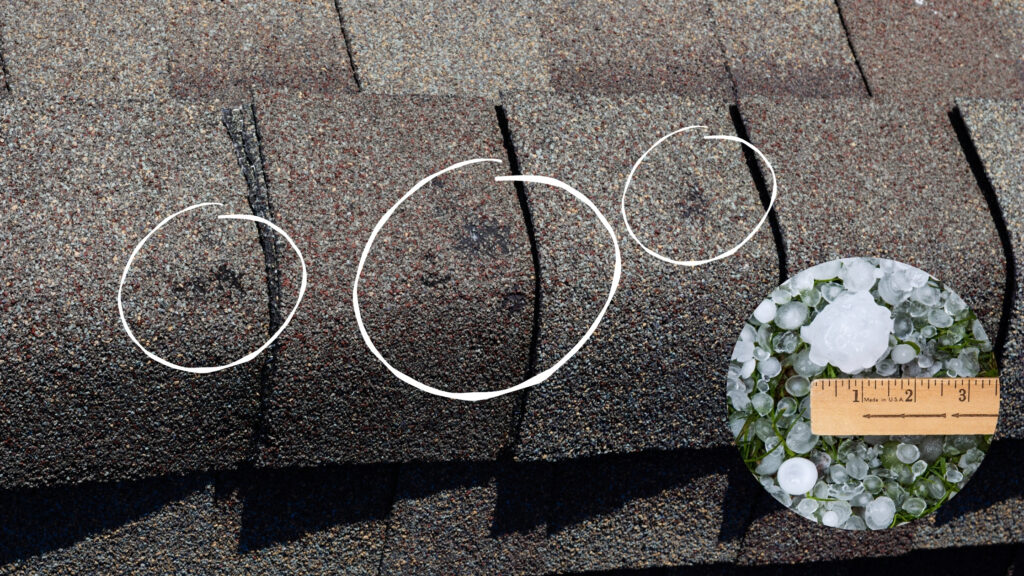How does hail damage a roof?
Hail damages roofs by knocking off protective granules, bruising or cracking shingles, and exposing asphalt to sun and water. That chain reaction accelerates aging and can lead to leaks, rot, and mold without a timely inspection.

How does hail damage a roof? (step by step)
When hail hits your roof, it can do more than just make a little noise—it can start a chain reaction of damage that threatens the integrity of your entire home. Here’s how it works:
1. Granule Loss
Asphalt shingles are topped with tiny protective granules that shield the underlying asphalt layer from the sun’s ultraviolet (UV) rays. When hailstones strike the roof, especially at high speeds, they can knock these granules loose. This is especially common with older roofs, where shingles have already started to wear down.
2. Exposure to UV Rays
Once the granules are gone, the asphalt layer beneath becomes exposed. This layer is not meant to take direct sunlight. UV rays begin to dry it out and break it down over time, causing the shingles to become brittle, crack, and curl.
3. Water Penetration
As shingles deteriorate, they lose their ability to repel water. Rain can now seep beneath the surface. Even small gaps or cracks allow moisture to enter the roofing system, especially during freeze-thaw cycles or wind-driven rain.
4. Rot and Mold Growth
Once moisture reaches the underlayment and wooden roof decking, the real problems begin. Damp wood creates the perfect environment for mold and mildew to grow. Over time, the decking can start to rot, weakening the structure of your roof and increasing the risk of interior leaks.
5. Leaks and Interior Damage
Eventually, water can make its way into your attic or ceiling, leading to visible water stains, peeling paint, and even electrical hazards. What started as a few hail strikes can now require major repairs—or even a full roof replacement—if left unchecked.
What Does Hail Damage Look Like?
- Bruised or missing shingles – Asphalt shingles may lose granules or show soft spots where hail struck.
- Cracks or dents – Metal, tile, and wood roofs can crack, dent, or split from impact.
- Exposed underlayment – When hail knocks off granules or chips away shingles, the waterproof layers underneath can become exposed to rain and UV damage.
- Leaking roofs – Over time, unnoticed hail damage can lead to roof leaks and costly interior damage.
Why Quick Action Matters
If hail has hit your area recently, it’s important to act fast. Damage may not be obvious at first, but it can reduce your roof’s lifespan and void warranties or insurance coverage if not addressed quickly.
Why Insurance Companies Take Hail Damage Seriously
Insurance companies know hail damage isn’t just looks on the outside. Small dents or missing granules can quickly turn into leaks, wood rot, and bigger repairs if nothing is done. Paying for a fix early is cheaper for them than covering major damage later, which is why they send adjusters out fast after big storms.
Get a Free Inspection
Our team has helped hundreds of homeowners in the Minneapolis and Twin Cities Area identify and repair storm-related damage. We offer free roof inspections with no pressure—just honest answers and expert guidance.
Worried your roof was damaged in a storm?
Contact us today for a no-obligation inspection.
